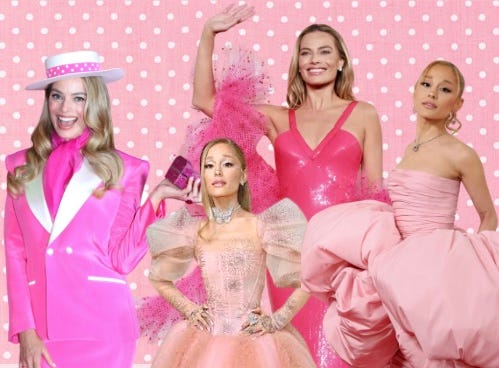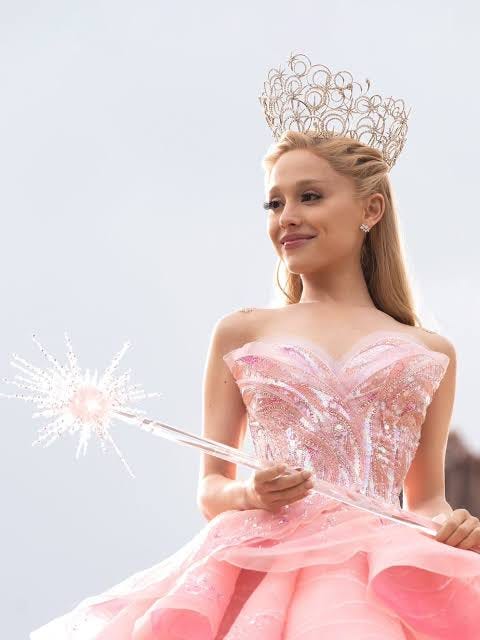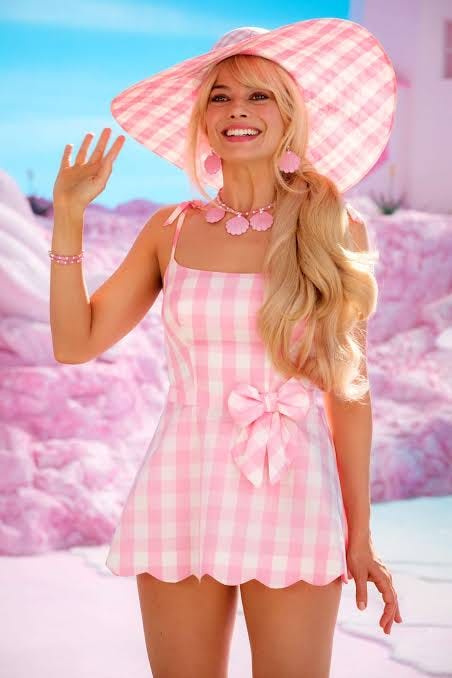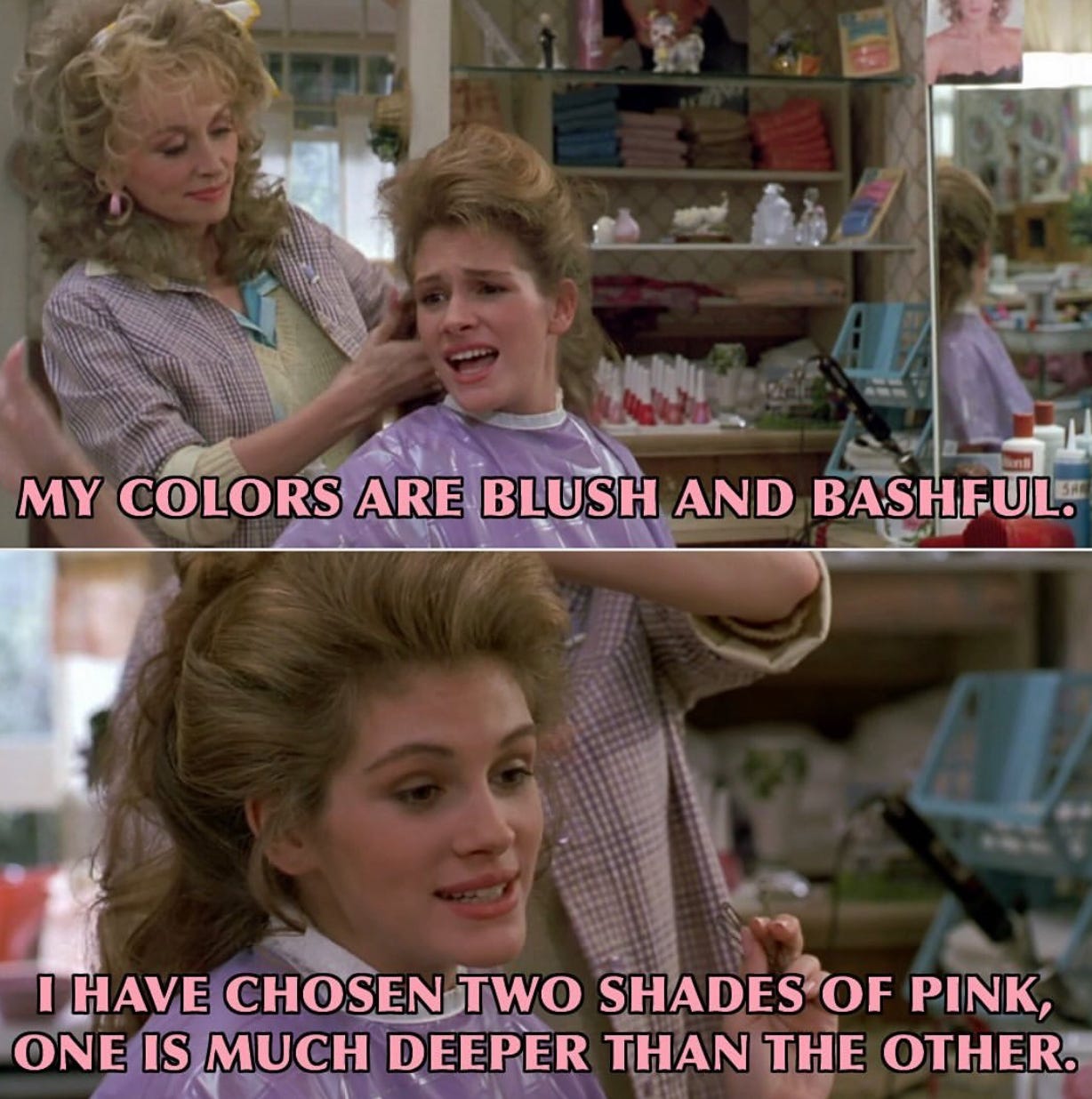Pink politics: The difference between Barbie Pink and Glinda Pink
Once a punchline, pink is now a power move—Barbie knew it, and Glinda's making sure you don't forget it.
So, pink is back — not that it ever really left.
"Been there, done that, bought the Barbie T-shirt," you might smugly think.
And while “pink” does know a thing or two about being popular, the thing about pink—and you know fashion loves a "thing"—is that it's never just pink.
With Wicked landing in cinemas, 'Glinda Pink' has entered the fashion chat, giving 'Barbie Pink' a run for its rhinestones. Yep, just two years after pink peaked with Barbie's neon glow, Wicked has arrived to remind us that pink isn't just a colour—it's a statement, a mood, a worldview. You don't wear pink so much as embody it.
Never one to let a shade pass without a seminar, fashion enjoys nothing more than telling us what shade of the same colour is most relevant. Pink might be back yet again, but this time, the tone has shifted. Which begs the question: What, exactly, is the difference between Barbie Pink and Glinda Pink—and what does it say about us?
Well, while Barbie Pink was bold and brash, Glinda Pink is pastel and pristine. Barbie Pink is the life of the party, and she doesn't care if she's overdressed for brunch. Glinda Pink, meanwhile, is brunch. It's delicate éclairs and fine china. While Glinda Pink might live in a bubble, Barbie Pink pops it.
The rivalry, if we can call it that, is not one of competition but of philosophy. Barbie Pink was about fun, freedom, and a not-so-subtle sense of rebellion. Glinda Pink, however, is delicate, deliberate, and quietly self-assured.
However, neither shade is quite as innocent — or outrageous — as it seems. Glinda's pastel restraint? That's work. Glinda Pink is a paradox: soft but sharp, sweet but strategic. Maintaining that airbrushed veneer is no less performative than Barbie's sartorial equivalent of a hot-pink megaphone.
Meanwhile, Barbie Pink might be loud, but it's not unsophisticated. This is a pink with layers; an intelligent pink that knows the difference between fun and frivolous and chooses both anyway.
Of course, comparisons between the stars' red carpet looks were also inevitable. Ariana Grande's Glinda-inspired press tour outfits—dubbed "method dressing"—were quickly likened to Margot Robbie's Barbie campaign, where every ensemble was a vibrant ode to her plastic alter ego.
Pink as it turns out, is the perfect metaphor for Barbie and Glinda. People assume these two characters (and Elle Woods from Legally Blonde and Cher Horowitz from Clueless and any other woman with blonde hair, a bubbly personality and a penchant for pink) are all the same — as interchangeable as the shades of pink they wear.
But the truth is, you can’t compare these women any more than you can underestimate them. Pink may tie them together, but it’s also what sets them apart: each one tinting it with her own perspective while the rest of the world just sees… pink.
What makes both Glinda and Barbie so compelling is their relationship to their world's expectations of them. Glinda is a product of her social context, manipulating the power structures of Oz to her advantage. Barbie is the structure—a creation of Mattel's marketing, designed to embody every aspiration ever sold.
Glinda's bubblegum charm is underpinned by a sharp wit that keeps her just this side of saccharine. On the other hand, Barbie uses her iconic pink to disrupt the male gaze rather than cater to it. Both challenge what it means to be blonde, beautiful and underestimated. Because if there's one thing Glinda and Barbie have taught us, it's this: it takes nerve to wear pink and make the world take you seriously while you do.
Perhaps it's no surprise, then, that pink has always been a battlefield—sometimes subtle, sometimes not—where personality meets perception. Allow me to turn your attention to another sisterhood in the annals of pink pop culture—one that declared a pink truce long ago, somewhere over the rainbow in the swivel chairs of a Southern beauty salon.
If you've ever seen Steel Magnolias—and if you haven't, rectify that immediately—you'll recognise this familiar tension of two pink tones. When Shelby, played by Julia Roberts, famously declared "blush and bashful" as her wedding colours, her mother (Sally Field's eye-rollin' M'Lynn) quipped, "Your colours are pink and pink." But the spirited Shelby doubled down: "I have chosen two shades of pink. One is much deeper than the other." And in that moment, the duality of pink was immortalised.
So there it is: blush is Glinda Pink, floating in a frothy pastel dream, while bashful is Barbie Pink's unapologetic high-octane hue. The genius of Shelby's palette was in giving us both.
Perhaps the truth is we're all a little bit Glinda and a little bit Barbie. Maybe Glinda Pink and Barbie Pink are two sides of the same sequin. Both pinks daring the world to find the steel beneath the sparkle, the substance beneath the style.
Of course, if neither pink sings to you, Wicked also provides a plot twist in the form of green. Because sometimes, when the world insists on pink, the boldest choice is to go emerald and defy expectations altogether.











